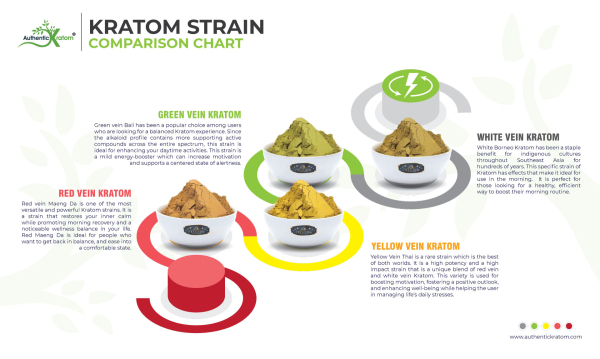Kratom Tolerance Explained


TL;DR: This guide explores kratom tolerance, explaining why kratom may become less effective over time and how the body adapts to regular use. While tolerance varies by individual, frequent users may notice diminished effects and require higher doses to achieve the same results. Factors like dosage, frequency, and strain selection influence tolerance development. Understanding kratom tolerance is essential for minimizing potential risks.
Disclaimer: This article is for informational purposes only and does not constitute medical, legal, or regulatory advice. Kratom is not FDA-approved, and its effects, risks, and legal status may vary by location. Always consult a healthcare professional before using kratom and check local laws to ensure compliance.
If you’ve been using kratom for a while and feel like it’s not working anymore, you may have developed kratom tolerance. This happens when your body becomes less responsive to kratom’s effects, leading some users to increase their dosage over time.
But how does kratom tolerance develop? Does kratom stop working over time? This guide explains the science behind kratom tolerance, its potential effects, and what it means for long-term users.
Key Takeaways
- Kratom tolerance develops when the body becomes less responsive to kratom’s effects.
- Signs of kratom tolerance include diminished effects, shorter duration, and increased dosage needs.
- A kratom tolerance break (3–7 days) can help reset your system and restore effectiveness.
- If left unmanaged, tolerance can lead to dependency or unwanted side effects.
What Is Kratom Tolerance?
Kratom tolerance occurs when your body adapts to regular kratom use, making it feel less effective over time. As a result, some people increase their dosage to achieve the same effects, which can lead to dependency and reduced benefits.
Tolerance is common with many substances, including coffee, medications, and herbal supplements. However, if not managed properly, kratom tolerance can impact both effectiveness and overall experience.
Signs That Kratom Stopped Working
If you notice any of the following, you may be experiencing kratom tolerance:
- Needing higher doses to feel the same effects.
- Feeling like kratom doesn’t work anymore, even at higher doses.
- Shorter duration of effects compared to when you first started.
- Increased side effects without the desired benefits.
If these sound familiar, it might be time for a kratom tolerance break or other strategies to reset your system.


Phases of Kratom Tolerance Development
Kratom tolerance doesn’t happen overnight - it develops in three stages:
1. The "Wow, This Is Amazing!" Phase
- This is when kratom products work at their best, even in small doses.
- Your body is highly sensitive to kratom’s effects.
- This phase typically lasts a few weeks to months for new users.
2. The "Just Perfect" Phase
- You’ve found your ideal dose and strain for consistent effects.
- Kratom works reliably, but occasional misses may occur.
- Staying in this phase requires moderation and mindful usage.
3. The "Kratom Doesn’t Work Anymore" Phase
- Effects feel weaker or completely absent.
- You may start increasing doses but still see diminished benefits.
- This is a sign that tolerance has developed, requiring a kratom tolerance reset.
How Long Does a Kratom Tolerance Break Take?
A kratom tolerance break can last anywhere from 3 days to 2 weeks, depending on:
- How frequently you use kratom
- Your dosage levels
- Your body’s metabolism and response
Most people start feeling kratom’s full effects again after a short break of 3–7 days.
Side Effects of Long-Term Kratom Use
If kratom tolerance is not managed, some users report:
- Nausea and digestive issues
- Fatigue and irritability
- Mood swings
- Sweating
- Diminished effects requiring higher doses
Taking breaks, rotating strains, and moderating usage can help avoid these issues.
Wrapping Up: Understanding Kratom Tolerance
Kratom tolerance is a natural response that occurs when the body adapts to regular kratom use, leading to diminished effects over time. While some people may experience this more quickly than others, factors like dosage, frequency, and individual body chemistry all play a role in how tolerance develops.
Recognizing the signs of kratom tolerance is important for those who want to maintain consistent effects while using kratom responsibly. As research on kratom and its long-term effects continues, staying informed about how tolerance works can help users make well-informed decisions about their kratom use.
Disclaimer: This article is for informational purposes only and does not provide medical advice. If you experience persistent tolerance or dependency concerns, consult a healthcare professional.
About Authentic Kratom
Authentic Kratom is your trusted source for premium, lab-tested kratom, proudly serving customers across the U.S. from our base in San Fernando Valley.
Founded in 2013, we set out to redefine the kratom experience—prioritizing quality, transparency, and customer well-being.
- Direct-from-source authenticity – Every strain is meticulously sourced from Indonesia’s finest kratom farms. If we can’t verify its purity, we won’t sell it.
- Uncompromising quality control – Lab-tested for potency, safety, and consistency, each batch comes with full transparency and batch numbers.
- Customer-first approach – Same-day shipping, free standard shipping, and top-tier customer service ensure a seamless experience.
- Industry leadership – As an American Kratom Association member, we adhere to strict GMP standards, advocating for kratom safety and education.
- A brand you can trust – With over 4,000 verified reviews, our reputation is built on real results and customer satisfaction.
At Authentic Kratom, we believe everyone deserves safe, high-quality kratom without the guesswork. Experience the difference with us—where quality, care, and integrity come first.









